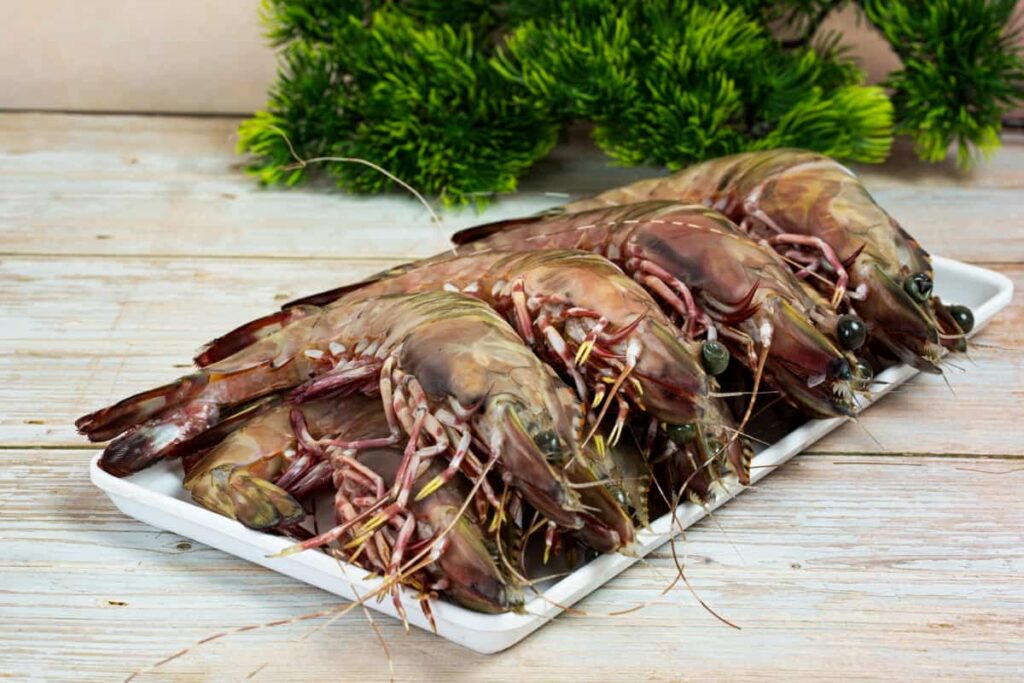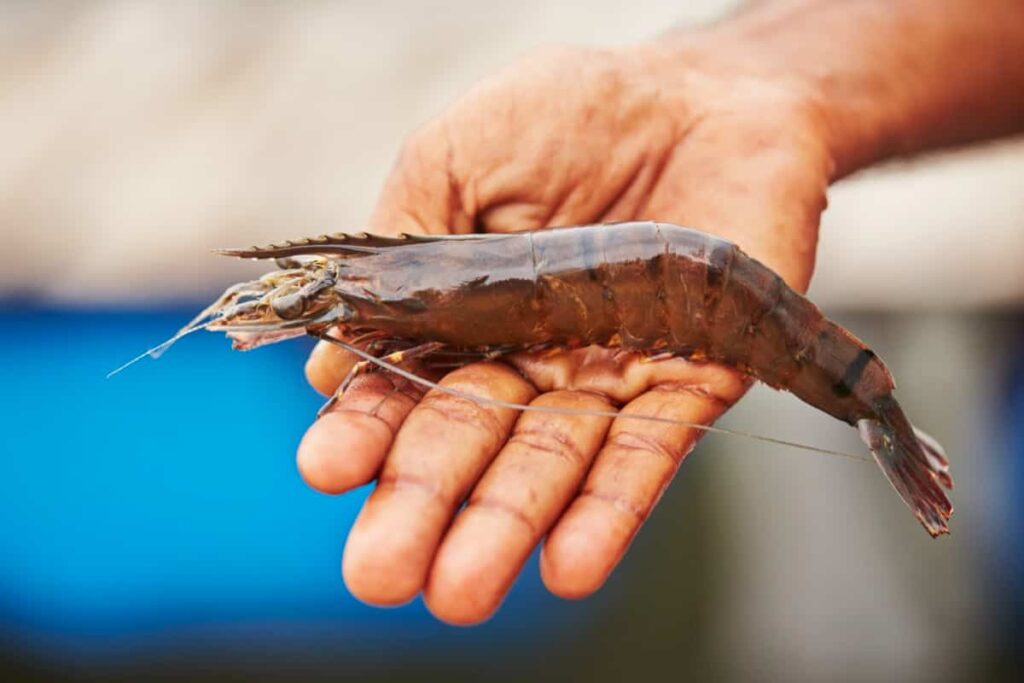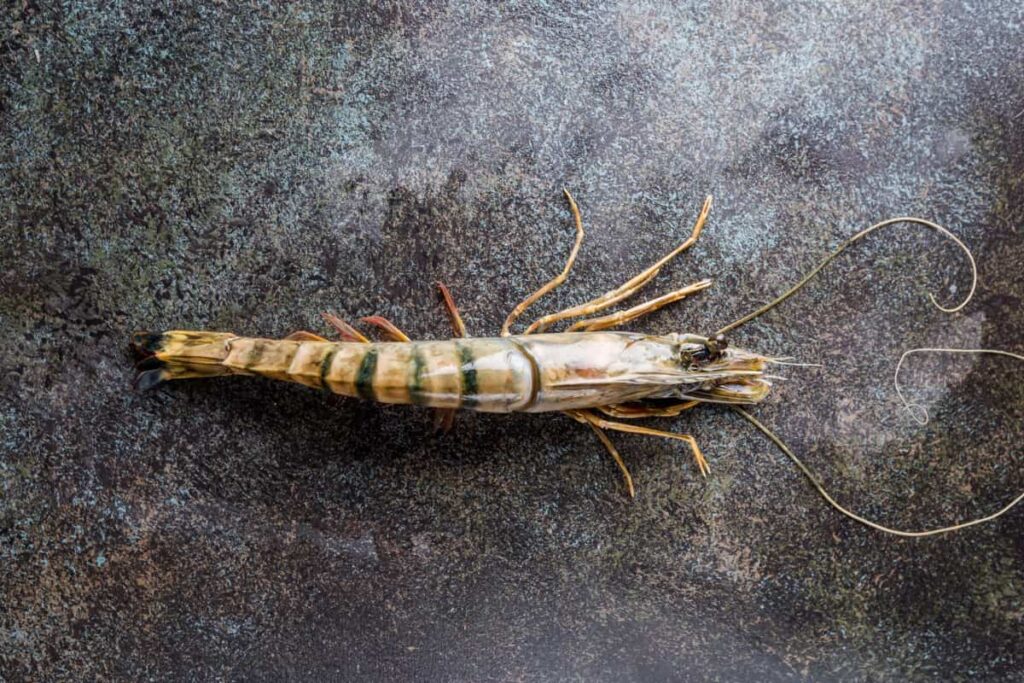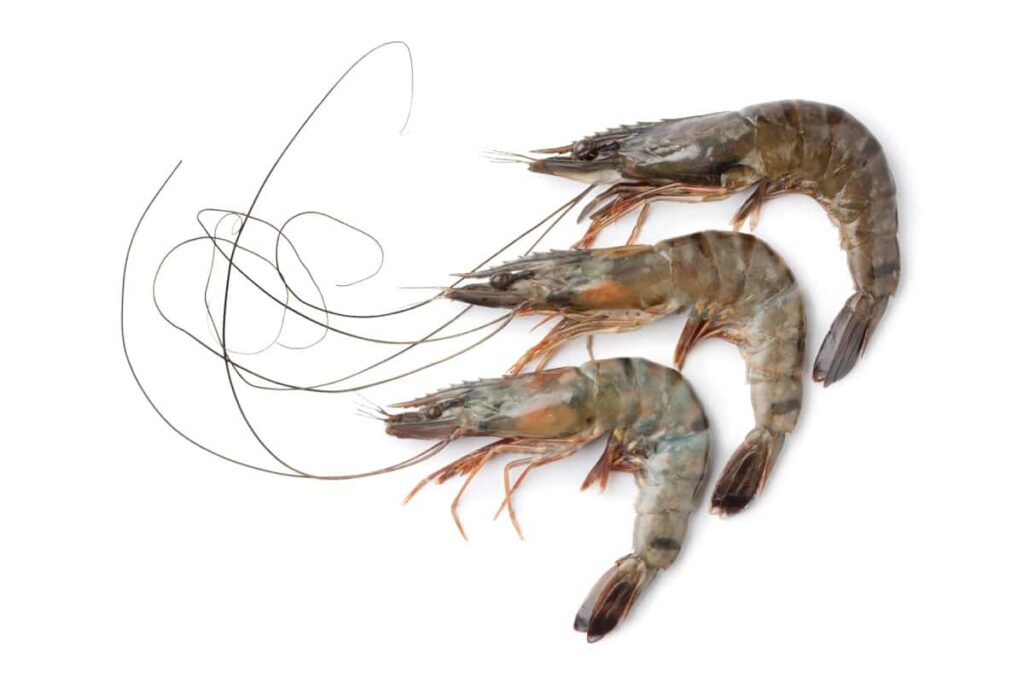Welcome to a comprehensive guide on Giant Tiger Prawn Farming in the Philippines. Embark on a journey through the intricacies of cultivating these remarkable crustaceans. We will unravel the scientific nuances from ideal habitat conditions to feeding intricacies. Discover the symbiotic relationships that enhance prawn growth, all while delving into the economic significance of this aquaculture marvel. Join us as we dive into the world of sustainable prawn farming, shedding light on techniques that ensure a thriving harvest.

What is Giant Tiger Prawn Farming?
Giant Tiger Prawn Farming is the meticulous cultivation of Penaeus monodon, a species of prawn celebrated for its sizable proportions and delectable taste. Operating within controlled aquatic environments, this practice involves replicating the prawn’s natural habitat while optimizing conditions for growth.
Farmers oversee water quality, temperature, and nutrition to ensure optimal development. By carefully managing these factors, prawns thrive and mature to marketable sizes. Scientifically informed practices drive this industry, focusing on genetics, disease prevention, and sustainable feed sources. This farming method has gained prominence in the Philippines due to the country’s coastal advantages.
Giant Tiger Prawn Farming in the Philippines: Overview
Species and Names: The Giant Tiger Prawn, scientifically known as Penaeus monodon, is a prized marine crustacean cultivated extensively for its culinary value. It goes by various names, including Asian tiger shrimp, sugpo, hipon, black tiger shrimp, and lukon/lokon in local languages.
Prominence in the Philippines: Among the Philippines’ prawn and shrimp farming ventures, the tiger prawn holds a significant position alongside Penaeus vannamei, also known as White Leg Shrimp. These two species dominate aquaculture practices in the country.
Physical Characteristics: Female tiger prawns can grow up to 33 cm (13 in), averaging around 25–30 cm (10–12 in) in length and weighing 200–320 g (7–11 oz). Males are slightly smaller, typically 20–25 cm long and weighing 100–170 g. Their distinct appearance includes transverse red and white bands on the carapace and abdomen, while grayish brown antennae and fringed setae on brown pereiopods and pleopods add to their uniqueness.
In case you missed it: Month-wise Prawn/Shrimp Farm Operations: Management and Maintenance for Better Profits

Geographic Range: Native to the Indo-Pacific, the giant tiger prawn’s habitat stretches from the east coast of Africa and the Arabian Peninsula across Southeast Asia, the Pacific Ocean, to northern Australia.
Giant Tiger Prawn Farming Techniques in the Philippines
Freshwater prawn, scientifically termed Macrobrachium rosenbergii, thrives in various inland water bodies like rivers, lakes, swamps, estuaries, and irrigation canals, including upstream river regions. Notably, a Luzon Island, Philippines survey identified 12 freshwater prawn species.
Initial interest in the Philippines’ freshwater prawn fishery dates back to 1914, when it emerged as a significant fishery resource. In the late 1970s, attempts were made to culture these prawns in Misamis Oriental, but these trials were short-lived. However 1981, a substantial commercial venture was established, featuring a 100-hectare prawn farm and hatchery. Unfortunately, even with expert involvement, this pioneering endeavor did not sustain success.
Economically, freshwater prawn culture is advocated as an alternative to the dominant tilapia aquaculture, offering higher profits. Their adaptability, rapid growth, and versatile feeding habits contribute to their commercial viability. These prawns can attain 45g in four months and 90-100g in seven months, fetching over PhP250.00/kg in Central Luzon’s market. Wild catch occurs in numerous regions, with historical collection reports in rivers like Marikina, Pasig, and Pampanga.
Best Practices for Giant Tiger Prawn Farming in the Philippines
Pond Preparation: Ponds used for tiger prawn farming are dried and cleansed of accumulated sediments between harvests. These sediments hold organic matter and mineral particles, which are cleared to maintain a healthy environment. Liming is done to encourage plankton growth and reduce disease risks. Ponds are filled, fertilized, and left for 7-10 days for plankton development.
Feeding: Post-larvae are stocked in ponds (25-40 per square meter) and gradually weaned from plankton to manufactured feed over four weeks. Prawns are fed 3-4 times daily, monitored with submerged feed trays, and growth is tracked through regular sampling. Efficient feed management minimizes wastage and ensures favorable feed conversion ratios (1.6:1 to 2.2:1).
Water Quality: Stable pond conditions and good water quality are essential for survival and growth. Paddlewheels and aspirators provide aeration, maintaining clean feeding areas and reducing sediment accumulation. Adequate aeration is crucial, requiring 1 kilowatt per tonne of prawns. Water exchange helps control algal blooms and ammonia levels, with minimal exchange for stability.
In case you missed it: Common Shrimp/Prawn Diseases, Symptoms, Treatment: Check How this Guide Helps Shrimp Farmers

Harvesting: Harvesting typically occurs in 120-150 days (4 to 5 months) based on stocking rates and water temperature. Partial harvesting may use traps, seine nets, or drain harvest methods. Prawns are often harvested when they reach 25-35g each. After harvesting, prawns are washed, graded, and commonly cooked before being marketed. Some prawns are sold fresh, while others are quick-frozen for storage and later sale.
Philippine Giant Tiger Prawn Aquaculture Industry
Freshwater prawn culture in the Philippines faced challenges due to limited seedstock availability. However, in 2001, the Philippine Government initiated semi-commercial M. rosenbergii production through BFAR-NIFTDC and BFAR-NFFTC. These Aquaculture Technology Research Centers became pivotal in the nation’s dispersion of freshwater prawn feedstock.
BFAR-NFFTC in Munoz, Nueva Ecija, imported M. rosenbergii from Thailand in 1992, leading to successful breeding trials and establishing a commercial hatchery protocol. Meanwhile, BFAR-NIFTDC in Dagupan City began hatchery management studies in 1999, focusing on cost-effective protocols with high survival rates.
Over 903,000 post larvae (PL18) and juveniles were produced, with different M. rosenbergii strains collected and evaluated for growth performance. The National Freshwater Fisheries Technology Center (NFFTC) facilitated technology dissemination to fish farmers, promoting techno-demonstration projects like small-scale backyard ponds, prawn-rice culture, and grow-out culture with tilapia.
This effort saw promising outcomes, including a project in Cauayan, Isabela, which yielded 150 kg in 500 m2 ponds within 4-6 months. Despite these advancements, freshwater prawn culture in the Philippines is in its early stages. Further endeavors are needed to decrease seedstock production costs and establish a market for M. rosenbergii, allowing its cultivation to evolve into a significant aquaculture industry akin to tilapia and milkfish farming.
Feeding Strategies for Giant Tiger Prawns in the Philippines
Post-larvae are stocked at rates of 25-40 per sq. meter. The gradual transition from plankton to manufactured feed over four weeks. Prawns are fed 3-4 times daily, using feed trays for measurement. Feed management reduces wastage and maintains feed conversion ratios of 1.6:1 to 2.2:1.
Water Quality Management in Philippine Tiger Prawn Farms
Paddlewheels and aspirators provide essential aeration. Aeration maintains clean feeding zones and minimizes sediment buildup. Increased aeration is needed with higher prawn biomass. Water exchange controls algal blooms and ammonia levels. 1 kW of aeration per tonne of prawns is required. Minimal water exchange for stability and sustainability.
In case you missed it: Unlocking the Potential Of Sustainable Aquaculture: How to Start and What You Need to Know

Disease Prevention and Control in Giant Tiger Prawn Farming
Common diseases in Giant Tiger Prawn Farming include White Spot Syndrome Virus and Acute Hepatopancreatic Necrosis Disease. WSSV can lead to up to 100% mortality within days, causing significant economic losses. AHPND, caused by Vibrio bacteria, affects the hepatopancreas, causing lethargy and slow growth.
Disease prevention involves strict biosecurity measures like disinfection and controlled water sources. Quarantine and health checks for new stock are crucial. Regular pond cleaning, proper nutrition, and water quality monitoring mitigate risks. In the case of disease outbreaks, rapid isolation and treatment using antibiotics, probiotics, or antiviral agents are imperative to safeguard prawn populations and industry sustainability.
Sustainable Giant Tiger Prawn Farming Methods in the Philippines
- Conduct assessments of freshwater prawn stocks in various water bodies to ensure a steady source of broodstock.
- Commercialize freshwater prawn hatchery technology.
- Conduct environmental impact studies in major inland water bodies.
- Demonstrate on-site grow-out culture through technology verification and dissemination.
- Pursue pilot testing in government freshwater stations and collaborate with private prawn farmers.
- Identify potential prawn culture sites, especially in Central Luzon and prospective areas.
- Encourage feasibility studies to attract investors.
- Facilitate credit financing in financial institutions to support the industry.
- Develop a national master plan for freshwater prawn aquaculture, addressing supply, market linkages, and benefits.
- Foster inter-agency collaboration to optimize available resources during research program implementation.
Market Demand for Giant Tiger Prawns in the Philippines
Freshwater prawns in the Philippines are primarily sold locally, with a surplus reaching local markets. In areas like Bulacan, where wild stocks thrive, 30g prawns fetch PhP250.00/kg or US$4.54/kg, while live ones command PhP350.00/kg or US$6.36/kg. Remarkably, a Bulacan prawn weighed 500g.
Notably, various regions yield distinct production estimates and market dynamics. Pamplona River sees 0.5 to 7.5 MT of M. rosenbergii, while Pampanga River and tributaries yield 15-30 MT, utilizing different fishing gear and targeting local or export markets. Diverse fishing grounds like the Donsol River, Iwahig River, Magat Dam, Cagayan River, Bacarra/Vintar, Abra River, and Lake Bato contribute to the Philippines’ dynamic prawn market.
Cost Analysis of Starting a Giant Tiger Prawn Farm in the Philippines
Starting a Giant Tiger Prawn Farm in the Philippines involves several initial setup costs. Pond preparation, construction, and liming contribute significantly. Procuring quality post-larvae for stocking and essential equipment such as aeration systems, paddlewheels, and feeders are crucial investments.
Labor costs, including skilled technicians and workers, are part of the initial expenditure. Disease prevention measures, such as quarantine facilities and biosecurity protocols, add to the setup costs. Moreover, feed expenses and ongoing water quality management contribute to the initial financial outlay.
In case you missed it: Himachal Pradesh Organic Farming: For Vegetables, Herbs, Fruits, Millets, Crops, Livestock, and Aquaculture

Licensing, regulatory compliance, and land acquisition or leasing expenses are essential components. Starting a prawn farm in the Philippines requires a minimum investment of approximately P50,000, with expenses allocated to larvae, aeration, and feeds. Adequate space allocation of 2 square feet per prawn prevents territorial behavior.
Breeding and Hatchery Management for Giant Tiger Prawns in the Philippines
Establishing Giant Tiger Prawn (M. rosenbergii) breeding and hatchery management in the Philippines faced initial challenges due to limited seedstock availability. In 2001, BFAR-NIFTDC and BFAR-NFFTC took steps to initiate semi-commercial production. Significant progress was made at BFAR-NFFTC, where breeding trials and larval production were successfully conducted, leading to a refined protocol for commercial hatcheries.
BFAR-NIFTDC also developed cost-effective hatchery management practices, successfully producing and distributing over 903,000 PL18 and juvenile prawns across different regions. Collaborative efforts with institutions like SEAFDEC support larval nutrition and growth systems, facilitating the adoption of prawn aquaculture in the country.
Giant Tiger Prawn Grow-out Systems in the Philippines
The National Freshwater Fisheries Technology Center (NFFTC) has made promising progress in freshwater prawn culture in the Philippines. Their successful technology has been disseminated to fish farmers through the establishment of techno-demonstration projects. These include small-scale backyard ponds, integrated prawn-rice culture, and grow-out culture with tilapia in fishponds.
Notably, a techno-demo project in Cauayan produced 150 kg in 500 m² ponds within 4-6 months. The NFFTC’s efforts have yielded positive growth results, such as final weights of 87.50%, 73.47%, and 55.97% for different stocking densities after 150 days of culture. Despite progress, freshwater prawn farming in the Philippines is still in its early stages, with potential for growth, cost reduction, and establishing a solid market presence akin to tilapia and milkfish industries.
Harvesting and Post-harvest Handling of Giant Tiger Prawns in the Philippines
Giant Tiger Prawns in the Philippines are typically harvested within 120-150 days, contingent on stocking density and water temperature. Harvesting methods vary; while partial harvesting with traps or seine nets is employed, drain harvesting is more common. This involves releasing water through an outlet fitted with a net to capture prawns.
Partial harvesting early in the season reduces density, allowing remaining prawns to grow larger. Prawns, usually 25-35g each, are harvested, washed, graded, and often cooked before marketing. Some are sold fresh, while others are individually quick-frozen for storage and later sale.
Comparison of Different Giant Tiger Prawn Species Suitable for Philippine Farming
Tiger prawns (Penaeus monodon) typically take about four months to reach harvest size (15-20 mm) in salinity of 15-25 ppt. These prawns have become a significant aquatic export for Southeast Asian nations. They exhibit adaptability to various salinities and can grow quickly, with optimal growth at 15-20 ppt salinity. While tiger prawns can thrive in freshwater for brief periods, they attain maximum growth rates in brackish conditions. Reproduction involves females releasing numerous eggs that hatch within 24 hours.
In case you missed it: How to Convert a Swimming Pool Into Koi Fish Pond: Ideas, Tips, and Techniques

Larvae progress through stages, drifting to shallow, highly saline waters. In the wild, tiger prawns can live up to 3 years in tropical oceanic conditions. They are omnivores, consuming algae, plant material, other invertebrates, and organic matter. In the Philippines, backyard farmers use tanks and aquaponics systems to grow tiger prawns. Both tiger prawn and white shrimp farming can be highly profitable, yielding around P750,000 to P1.2M per hectare under favorable conditions.
Conclusion
Giant Tiger Prawn farming in the Philippines presents a promising opportunity for sustainable aquaculture. With advances in breeding, hatchery management, grow-out systems, and post-harvest practices, the industry shows growth potential, contributing to the country’s aquaculture landscape and economic prosperity.
- Management Pests and Diseases in Your Cotton Field
- Sheep Farming Business Plan for Beginners
- Aquaponic Farming at Home: A Step-By-Step Guide
- Profitable Village Farming Business Ideas in 2024
- High-Yield Aquaculture: Fast-Growing Fish for Farming
- Effective Fish Pond Construction Techniques for Beginners
- Irrigation and Water Management in Pineapple Farming
- Blossom to Harvest: Mastering Flowering and Pollination in Papaya Farming
- Pig Fattening Essentials: From Selection to Sale for Beginners
- Raising Wagyu Cattle: A Complete Guide for Premium Beef Production
- Soil Types and Their Water Holding Capacity
- Optimizing Irrigation Schedules for Coconut Groves for Enhanced Yield
- Espresso Your Garden: Coffee Grounds for Healthier Acid-Loving Plants
- The Best Soil Mix for Snake Plants: How to Mix Your Own Snake Plant Soil
- Green Thumb Success: Expert Tips for Cultivating Greenhouse Beans All Year Round
- Bloom All Year Round: The Ultimate Guide to Indoor Hyacinth Care
- Eco-Friendly Gardening: How to Make Liquid Fertilizer from Kitchen Waste
- Ultimate Guide to Grow Anise in Pots: Explore Seed Propagation to Harvesting
- Guide to Raising Chester White Pigs: Discover Breed Facts to Growth Management
- Mastering the Elegance: The Ultimate Guide to Weeping Cherry Tree Care, Planting, and Maintenance
- Ultimate Guide to Planting Garlic in Grow Bags: Growing Strategies for Beginners
- How to Fix Spider Plant Leaf-Related Problems: Natural and Organic Remedies
- 10 Reasons Why Your Tulsi Plant is Shedding Leaves: Home Remedies and Solutions
- Optimizing Growth and Yield: The Advantages of Palm Bunch Ash Fertilizer
- Utilizing Neem Oil Extract as a Natural Pesticide for Hydrangea
- From Soil to Harvest: Various Ways in Which Farmers Can Use AI Tools
- Steps to Encourage and Induce Citrus Flowers: A Comprehensive Guide
- How to Fix Snake Plant Leaf-Related Issues: Natural and Organic Remedies
- Transform Your Garden into a Fragrant Oasis with Raat Ki Rani (Night Blooming Jasmine)
- Discover the Ideal Chicken Breeds for Philippine Farms
- How to Create a Poultry Egg Farm Business Plan for Profits
- Grow Lemon Cucumbers Like a Pro: Insider Techniques for Bountiful Yields
- Ultimate Guide to Caring for Your Pink Princess Philodendron: Tips for Thriving Variegation
- Areca Nut Profit Per Acre: Calculating Yield and Cost of Cultivation
- How Kaveri Chicken is Becoming a More Profitable Breed in Indian Backyards
- Transform Your Barn: 9 Steps to Convert a Horse Stall into a Chicken Coop
